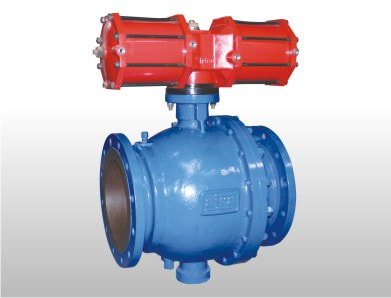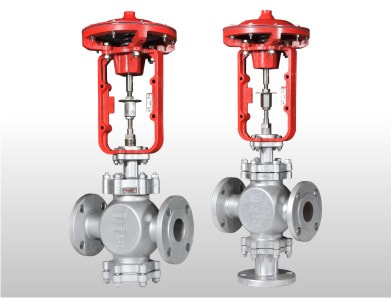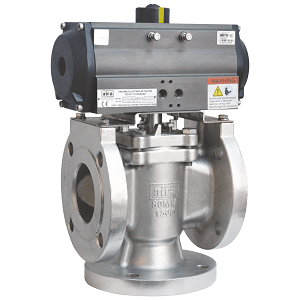|
WHAT IS A BALL VALVE? Ball valves are key devices to stop and deal with the movement of a fluid (oil, gas, steam, etc) in the petrochemical business. INCLINATION AND DISADVANTAGES OF BALL VALVES Such a valve has the going with inclinations:
The downsides are:
TRUNNION MOUNTED BALL VALVE
Trunnion mounted ball valves have been familiar with adjusting to the size limitations of standard floating valves spread out above. Doubtlessly, in this sort of valves the shaft, the ball, and the supporting trunnion go probably as a single solid party prepared to withstand the profound weights made by balls of immense estimations. Other than a size versatility advantage, a trunnion valve incorporates a lower working power diverged from a floating valve plan (which can transform into a benefit when the valve ought to be induced, as more unobtrusive and moderate actuators can be fitted to work the valve). FLOATING BALL VALVE In a floating valve, the ball is suspended in the streaming fluid and is kept in the circumstance by the pressing factor of two elastomeric seats against it. The shaft is related at the most noteworthy purpose of the ball and allows the change from an open to a shut circumstance with a quarter turn improvement (90 degrees). Right when the shaft is moved, a load is applied to the ball which gets crushed against its seats. This arrangement, which is lightweight and financial, suits bore assesses to 10 inches: over this drag size, the seats of the valve would not have the alternative to withstand heavier and heavier balls and the valve would not work safely and viably. Floating valves license a bi-directional shut-off of the stream. (as the trunnion type)
0 Comments
The great performance of management valves is a secret to optimum process control and also to overall plant performance. flow Control valves have issues that are tracked to the inadequacy in the layout, or because of their misapplication. Those problems can be broadly divided into two classes, i.e. design-selection along with operations-maintenance. Valve replacement has been the conventional approach to fixing valve problems in the first category. This normally results in the valve being insufficient for the specific service, in most cases because of misapplication. The process of valve replacement is also well understood and the solution is effective so long as the root cause of issues is dealt with. However, when the valves are machined in line, there is substantial installation cost associated with engineering, scheduling, cutting and re-welding valves, and also post-weld inspection. This makes the entire price of solving the original valve problem a whole lot more than the total cost of the hardware itself. Retrofit is a very good pick for solving pressure valve issues. The retrofit option can be designed specifically to deal with the source of problems. It is a low-risk and also an economic option when correctly applied, particularly in severe service programs and in which large sizes of valves are involved. Retrofit of these valves removed the initial problem of under capability altogether and also the normal lift on these valves is now 50%, providing sufficient capability to respond to transients.
The reliability of retrofit solutions has been demonstrated by their application in several safety-related applications in atomic power plants. Retrofitting is an alternative that has to be taken into account when solving design-selection-related valve issues. They're engineering-intensive and require experience. When correctly implemented, they can eliminate the root cause of problems. Additionally, they create economic sense. It is no doubt that a properly employed retrofit solution can achieve many advantages. There will be reduced prices. A number of the components in the installation cost, for example, engineering, cutting welding, pipes, and pressure testing are dramatically reduced or even removed. As a result, the total cost is less than that for a brand new valve. Besides, the risk is also reduced. Since the inner measurements of the human body aren't altered, the danger of the end-user can also be reduced. Moreover, there'll be a reduced downtime. Since the setup doesn't require cutting of the plumbing, re-welding, etc., the turnaround time for installation is much faster. Stainless steel plug valve affects a well within an opening or closing apparatus. The featured part of the valve is the rotating plug valve body with a through-hole, that runs vertically on the axis of the pipeline. The plug valve is activated by the valve stem so as to attaining the shutting-off performance. In fact, the plug valve has been developed and applied to many different industries for a long time. With the very simple but streamlined structure, immediate functioning and low fluid immunity, this kind of valve has been occupying high recognition. The entire body of the valve, which is largely cone (air as well), cooperates with the tapered surface of the valve seat so as to form excellent sealing surfaces. The materials such as the cast iron, cast iron, stainless steel, chrome-molybdenum steel, or brass are usually applied to the creation of the valve body. The adoption of the Wã$F or F for the produce of the sealing surface significantly increases the variety and performance of the valve. Besides, many efforts have been done to enhance the sealing and service life. As an instance, the specially manufactured grease lubricant is hauled in the top of the body into the area between the hole and the body. Such does help form movies to decrease the friction.
At this moment, the plug valve can be linked from the flanged, welded, or clamped connection. Along with the worm gear can be utilized to drive the valve. According to the channel, the valve can be classified into the straight-through type, three-way type, and four-way kind. Regardless of what, the valve itself is currently readily available for the control of this oil, oil, gas, natural gas, or some acids, and so on. So as to optimize the performance, it is necessary to be cautious in regards to the installation and regular maintenance. And it needs to be noted that the plug valve is not allowed to be utilized for regulating the stream. |
Categories
All
|




